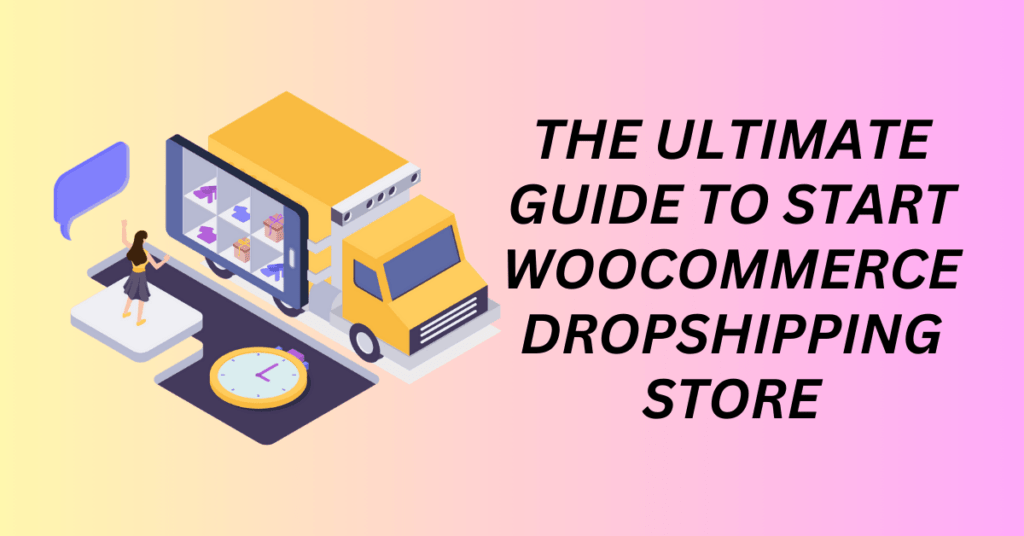Starting an eCommerce store has been a lucrative side hustle that many people have in mind. However, most are being pulled back by the need to invest in buying an inventory. Dropshipping as a business model in which you rely on your supplier’s inventory to sell has grown interest. But what about WooCommerce Dropshipping?
Dropshipping has enabled lower entry for new business owners as you don’t need to risk buying the inventory to start. Instead, you only order from your supplier when orders come in. Therefore, you don’t need staff to process the order, packing and shipping it out. Everything is handled by your dropshipping supplier.
This has then eliminated the need to rent a physical place, buy inventory and hire employees to start a business. In fact, you can start one in just a few clicks online.
Today, we will be focusing on the WooCommerce WordPress platform to build your dropshipping business. Not only that, we will also share step by step guide on how to start your dropshipping business with WooCommerce.
What is Dropshipping?
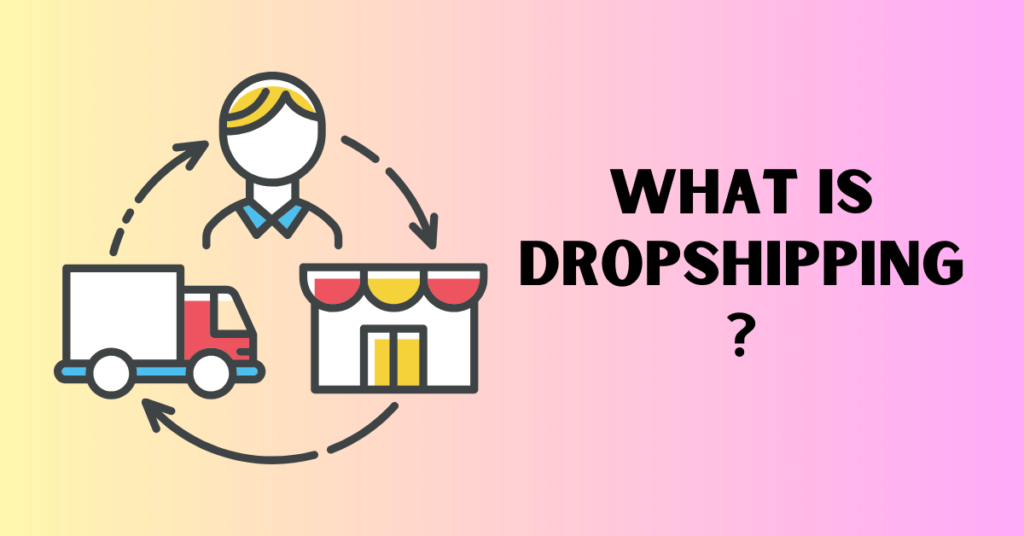
Dropshipping is a retail fulfilment model where an online store sells products to customers without physically stocking them. In this model, the merchant partners with suppliers or wholesalers who hold the inventory and are responsible for shipping products directly to the customers.
The key distinction is that the store does not handle or manage the products it sells. When a customer makes a purchase, the order details are forwarded to the supplier, who then handles packaging, shipping, and delivery. This eliminates the need for the seller to invest in inventory, warehousing, or the associated logistics. Hence, making it a low-risk and cost-effective business approach.
One of the primary advantages of dropshipping is the low entry barrier it offers to aspiring entrepreneurs. Without the necessity of a significant upfront investment in inventory, entrepreneurs can swiftly set up an online store and start selling products.
Dropshipping also allows for a flexible business model. Store owners can easily test different products and markets without financial risk.
The Essence of WooCommerce
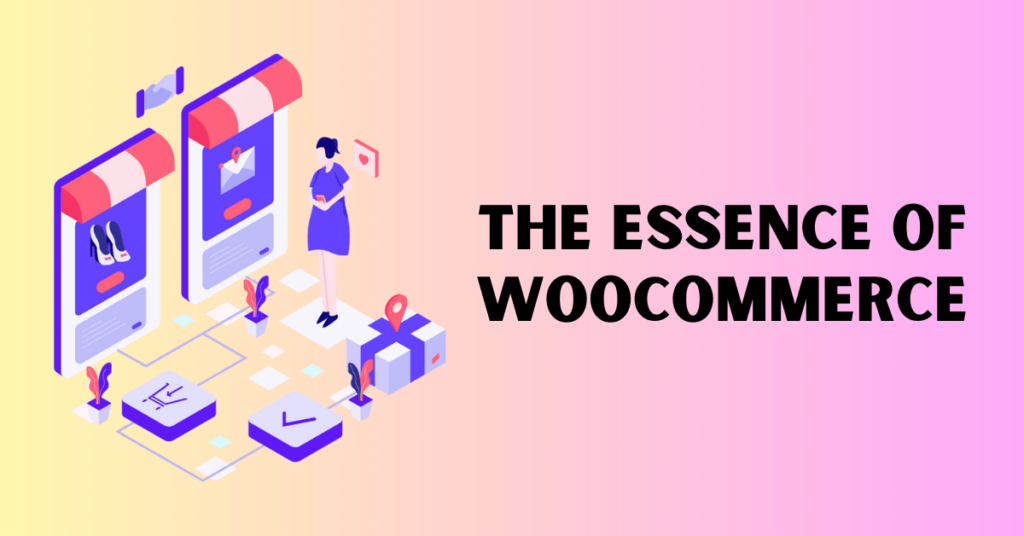
WooCommerce is a powerful and versatile e-commerce plugin designed for WordPress, the most popular content management system. However, the pre-requisite for WooCommerce would be a working WordPress website.
WooCommerce effectively transforms a standard WordPress website into a feature-rich online store. This allows users to sell products and services seamlessly. WooCommerce has rapidly gained widespread adoption due to its user-friendly interface, extensive customization options, and a robust ecosystem of plugins and themes.
At its core, WooCommerce offers essential e-commerce functionalities such as product management, shopping carts, secure checkout processes, and customer account management. Users can then easily set up and organize their products, apply pricing strategies, configure shipping and tax options, and monitor inventory levels.
Additionally, WooCommerce provides various payment gateway integrations, enabling secure transactions for customers. This extensibility and adaptability make WooCommerce suitable for a wide range of businesses, from small startups to large enterprises.
One of WooCommerce’s standout features is its flexibility in design and customization. Users have the freedom to personalize their online store’s appearance and functionality through themes and plugins. In addition, themes control the look and feel of the store, allowing customization of layouts, colours, typography, and more.
Furthermore, plugins extend the core functionality of WooCommerce, providing additional features like advanced analytics, SEO optimization, membership systems, and, as discussed earlier, integration with dropshipping services. This adaptability ensures that WooCommerce can cater to diverse business requirements, making it a preferred choice for many e-commerce entrepreneurs.
The Advantages of WooCommerce Dropshipping
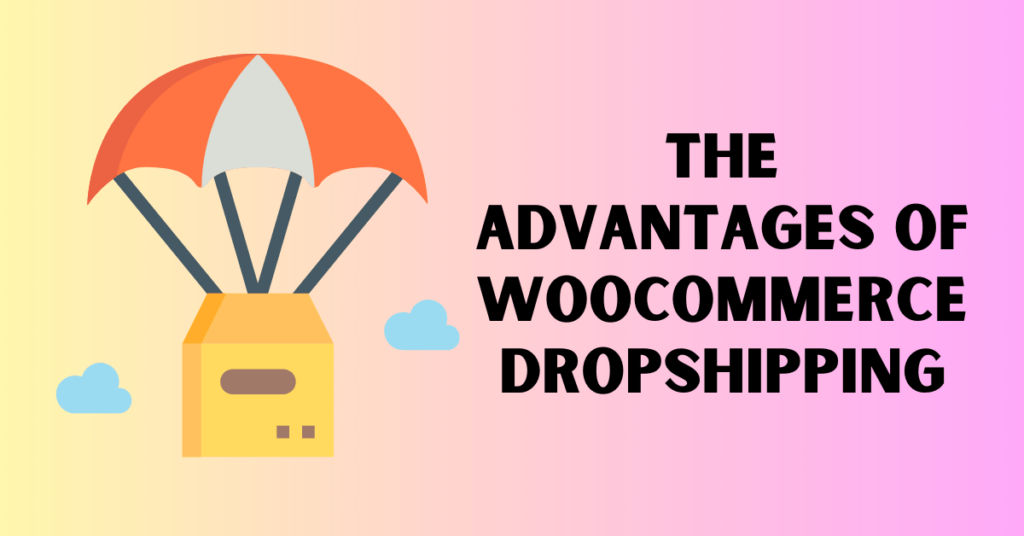
Dropshipping, coupled with the WooCommerce platform, offers a multitude of advantages for aspiring and established e-commerce entrepreneurs.
Firstly, low startup costs stand out as a significant benefit. Traditional retail models often require substantial capital investment in inventory, warehousing, and fulfilment. In contrast, with dropshipping using WooCommerce, there’s no need to purchase products in advance or manage a physical inventory.
This considerably lowers the financial barrier to entry, making it an attractive option for those with limited funds or looking to minimize financial risk.
Another key benefit of dropshipping with WooCommerce is the ease of setup and management. WooCommerce is renowned for its user-friendly interface and seamless integration with WordPress. In addition, setting up an online store, importing products, and managing orders are streamlined processes with the aid of specialized dropshipping plugins.
These plugins automate many aspects of the dropshipping operation, including product importation, inventory tracking, and order fulfilment. This allows entrepreneurs to focus on marketing, customer service, and growing their business instead of getting bogged down by logistical complexities.
Lastly, product diversity and scalability are pivotal advantages of employing WooCommerce for dropshipping. Dropshipping facilitates offering a vast array of products without the need for physical storage or inventory management.
WooCommerce’s integration with various suppliers and the ability to add or remove products with just a few clicks enable sellers to quickly adapt to market trends and customer preferences. As your business expands, WooCommerce easily scales to accommodate the growth, providing a stable foundation for managing an ever-increasing product range and customer base.
How to Start Dropshipping with WooCommerce
Starting a dropshipping business with WooCommerce can be an exciting venture that requires careful planning and execution. This essential guide will walk you through the steps to set up a successful WooCommerce dropshipping store.
Step 1: Choose Your Niche and Research Suppliers

Begin by selecting a niche that aligns with your interests and has a viable market. Conduct thorough research to identify reliable dropshipping suppliers within your chosen niche. Consider factors such as product quality, shipping times, and supplier communication.
For example, if you choose the “Home Decor” niche, research suppliers like “DecorWhiz” and “HomeGems” known for their wide range of home decor products and efficient dropshipping services.
Step 2: Set Up Your WooCommerce Store
1. Choosing A Domain Name
Setting up a WooCommerce store begins with choosing a domain name that encapsulates your brand and niche. This domain is essentially your online address, making it essential to be memorable and representative of your business.

Get Your Domain Name with a Special Discount
2. Getting a Web Hosting Service
Following this, you’ll need to select a reliable hosting provider that supports WordPress and WooCommerce, as these are the foundations of your e-commerce venture. Providers like Bluehost or SiteGround offer easy WordPress installations, providing you with a platform to build your online store.
Get WordPress Hosting With Bluehost – Exclusive Discount and Free Domain Available
3. Getting Web Hosting Service and Installing WordPress
Once you have secured your domain and hosting, installing WordPress is the next crucial step. Most web hosting service providers like Bluehost, offer one-click installation for WordPress.
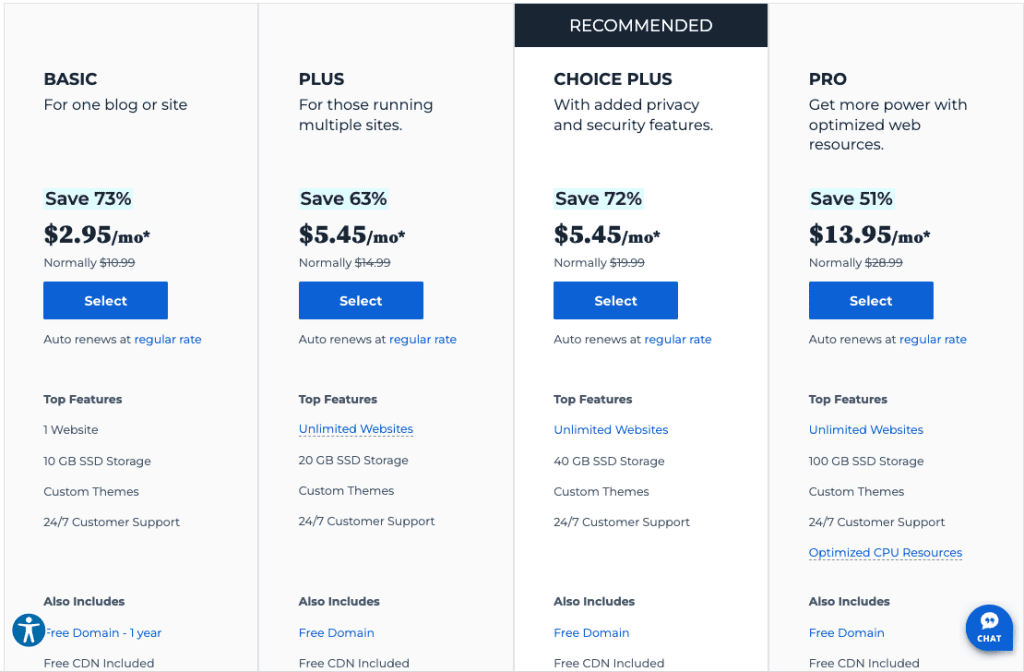
After signing up for the service, all you need to do is follow the setup wizard to get your WordPress installed and live. When the installation is completed, you can now access your WordPress dashboard and view your site going live.
The WordPress dashboard is where you can manage your WordPress website, install different themes and customize it.
4. Installing WooCommerce Plugin
After WordPress is up and running, installing the WooCommerce plugin is straightforward. Through your WordPress dashboard, navigate to Plugins, search for “WooCommerce,” and activate it. This plugin will transform your website into a fully functional e-commerce store.
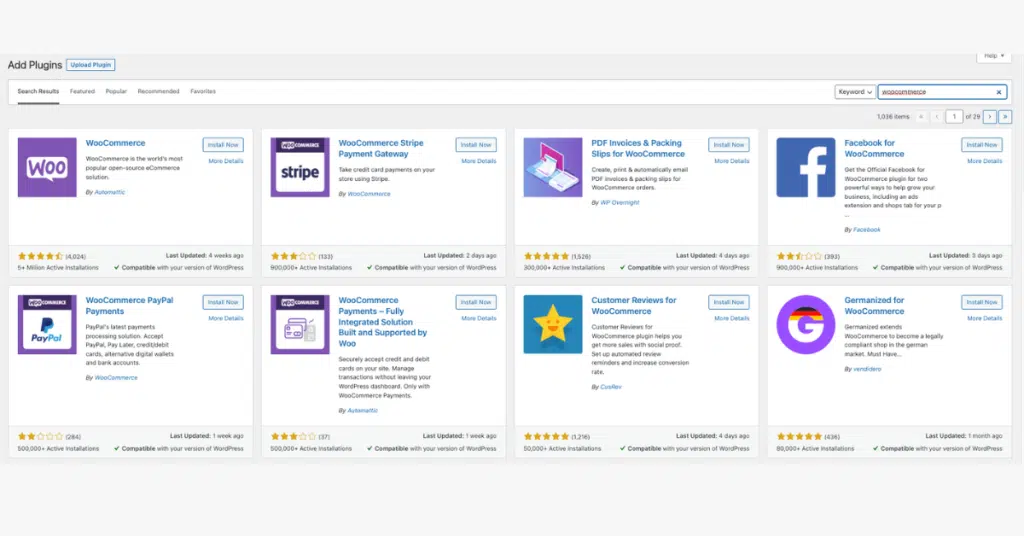
Now, as WooCommerce is installed, a setup wizard guides you through the initial configurations. You’ll configure general settings such as your store’s location, selling locations, and currency options.
Integrating payment gateways like PayPal and setting up shipping methods and tax settings are integral components of this setup phase. These configurations are essential for the smooth operation of your store and for ensuring a seamless shopping experience for your customers.
For example, set up your store with USD as the currency, integrate PayPal and credit card payments, offer free shipping within the US, and configure applicable taxes.
5. Setup WooCommerce Plugin
Customizing your store comes next. Choose a WooCommerce-compatible theme that resonates with your brand identity and is user-friendly. Customize product pages, set up categories, and craft engaging product descriptions, as these elements greatly influence a customer’s decision to purchase. Essential pages like Home, About Us, Contact Us, and FAQs need to be created to provide necessary information to your visitors.
To enrich your store’s functionality, you can explore and install various plugins. For instance, integrating a WooCommerce dropshipping plugin, if you intend to dropship products, can significantly enhance your store’s capabilities. These plugins facilitate efficient product imports and order management, streamlining your dropshipping process.
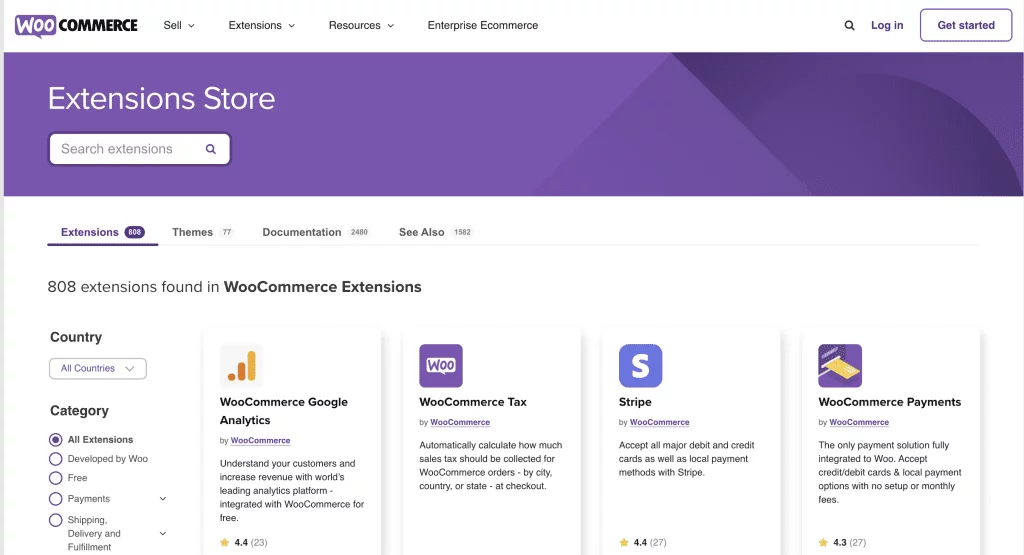
Finally, it’s crucial to extensively test your store before launching it. Make test purchases to ensure the checkout process works smoothly, check that all links are functional, and verify that your pages display correctly. Once you’re satisfied with the setup and functionality, you’re ready to promote your store and welcome your first customers. Launching your WooCommerce store is the exciting culmination of your efforts in setting up an online platform for your business.
Step 3: Install a WooCommerce Dropshipping Plugin
Choose and install a suitable WooCommerce dropshipping plugin to streamline product imports and order fulfilment.
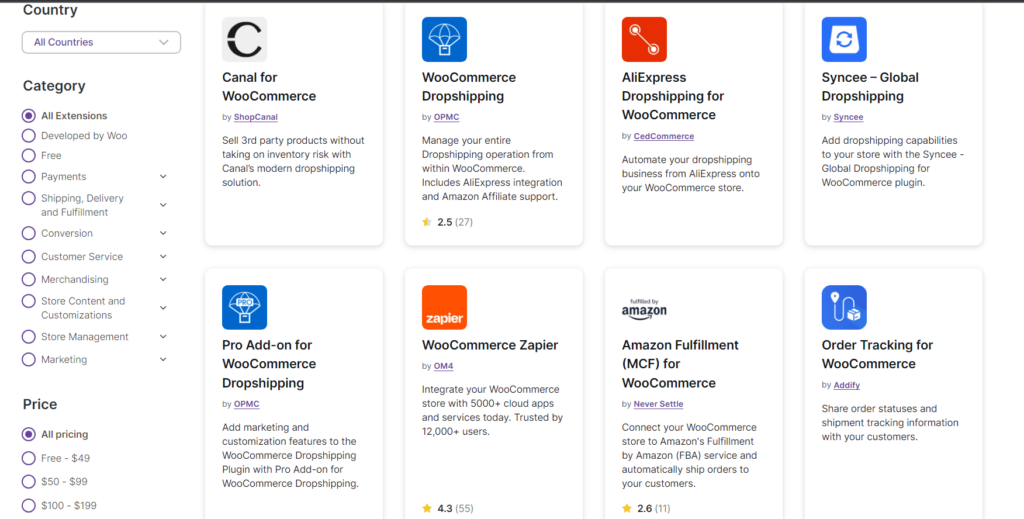
For example, install the “AliExpress Dropshipping for WooCommerce” plugin, which allows easy import of products from suppliers, automated order processing, and automatic order tracking updates.
Step 4: Integrate Suppliers and Import Products
- Create Supplier Accounts: Sign up and create accounts with the selected dropshipping suppliers.
- Integrate Suppliers in the Plugin: In the Dropified plugin, integrate your supplier accounts using the respective API keys or credentials.
- Import Products: Use the plugin to import products from the supplier’s catalogue into your WooCommerce store. Customize product details like pricing and descriptions to suit your brand.
Step 5: Optimize Your Store for Sales
- Design a User-Friendly Website: Choose a clean, intuitive design that enhances the user experience. Optimize for mobile devices and ensure fast loading times.
- Create Compelling Product Pages: Write engaging product descriptions, use high-quality images, and display customer reviews. Add a clear call-to-action to encourage purchases.
For example, design a product page for a “Modern Abstract Canvas Print” with appealing visuals, detailed descriptions, and a prominent “Add to Cart” button.
Step 6: Implement Marketing Strategies
- Social Media Marketing: Leverage platforms like Instagram, Facebook, and Pinterest to showcase your products and engage with your audience.
- Email Marketing: Collect emails through a sign-up form on your website and use email campaigns to promote new products, discounts, and special offers.
For example, run a Facebook ad campaign showcasing your best-selling home decor items, targeting users interested in interior design.
Step 7: Monitor Performance and Optimize
- Track Website Analytics: Use tools like Google Analytics to monitor website traffic, user behaviour, and sales data.
- Gather Customer Feedback: Collect feedback from customers to identify areas for improvement and make necessary adjustments to enhance your store’s performance.
For example, analyze data to find that “Rustic Farmhouse Decor” products receive the most traffic, prompting you to add more products in this category.
By following these steps and continuously optimizing your WooCommerce dropshipping store, you’ll be well on your way to building a successful online business. Happy dropshipping!
Final thoughts: The Ultimate Guide to Set Up WooCommerce Dropshipping Store
Starting a dropshipping business is easy with WooCommerce WordPress. You can set up the entire business within hours. Not only that, but the investment is very low with dropshipping.
All you need is to get your WordPress website launched and then install the WooCommerce plugin and dropshipping plugin to get it started and run.
